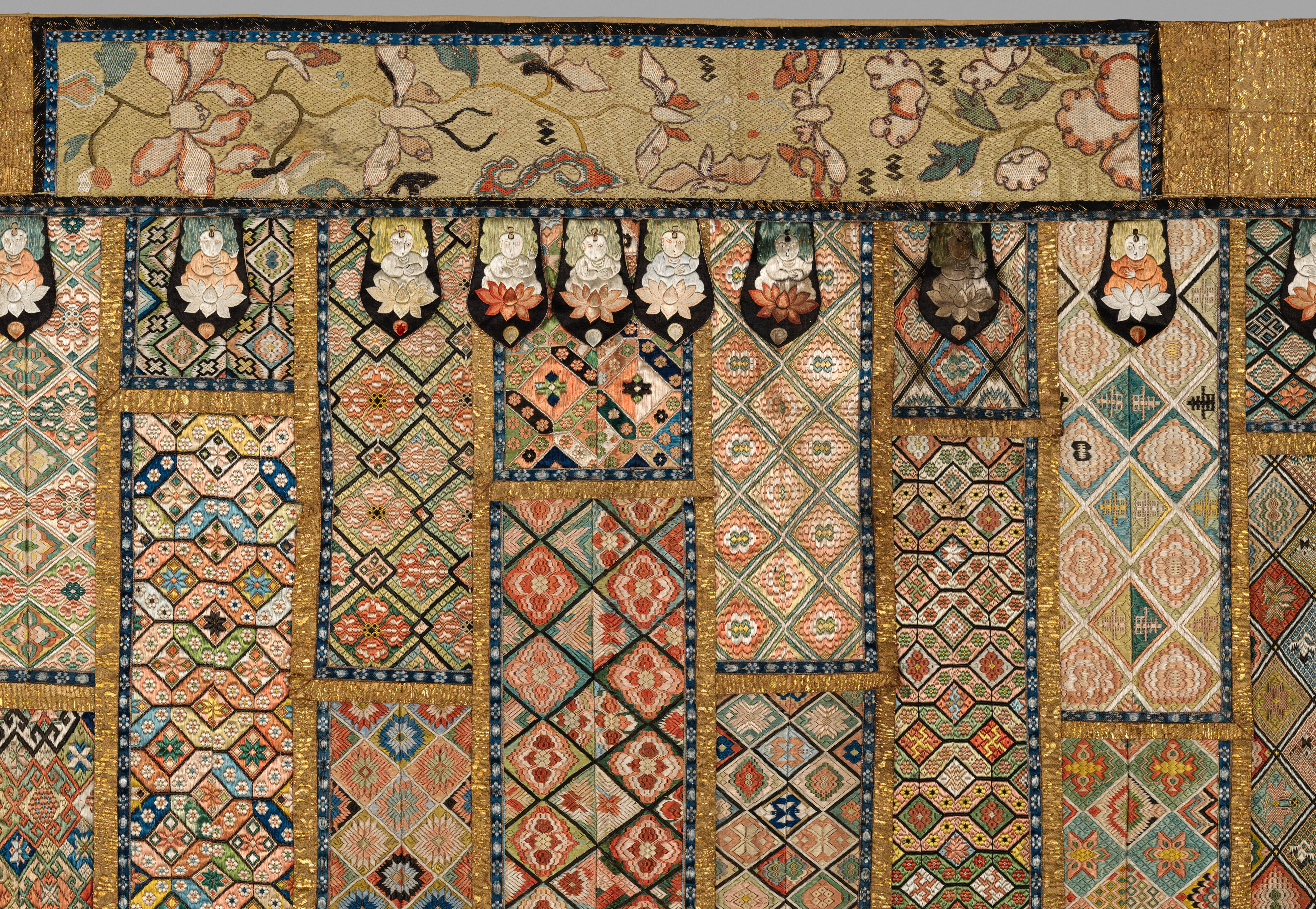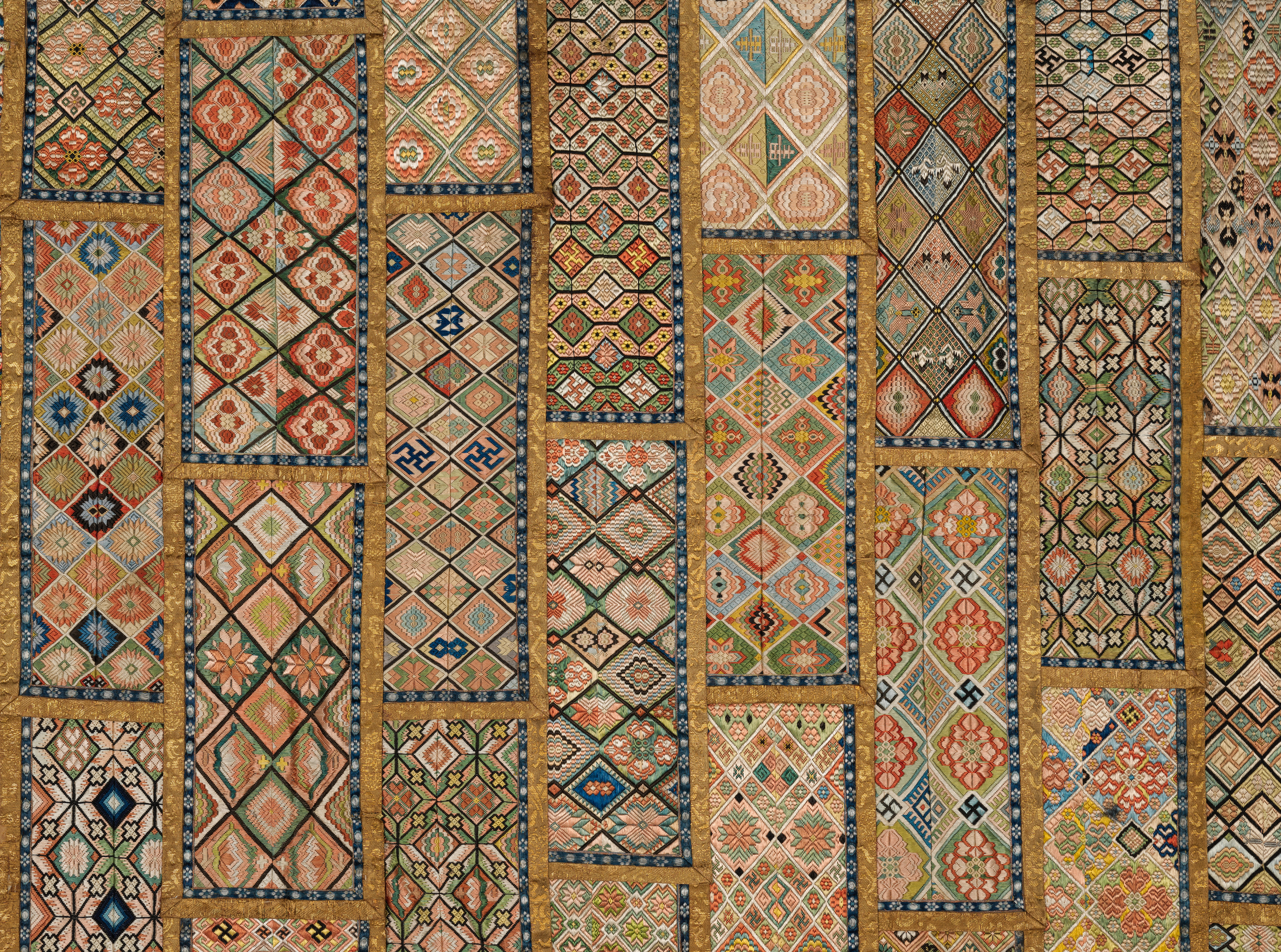Buddhist vestment (kasaya)
Not on view
This magnificent vestment represents the kind of sophisticated embroidery works used in high-end garments for Buddhist priests during the 18th to the 19th century. Known as kasaya, this type of garment, generally rectangular in shape, was worn over an inner robe and fastened in the front with a clasp. According to Buddhist regulations, the number of patchwork columns, from five to twenty-five (always an odd number), indicates the specific function and importance of the robe. This example, with nineteen columns, corresponds to the top middle level of samghati, or vestments used in formal ceremonies. This robe features an intricate patchwork of colorful embroideries. The meticulous needlework and luxurious materials indicate the prestigious status of its owner.
This image cannot be enlarged, viewed at full screen, or downloaded.
This artwork is meant to be viewed from right to left. Scroll left to view more.




